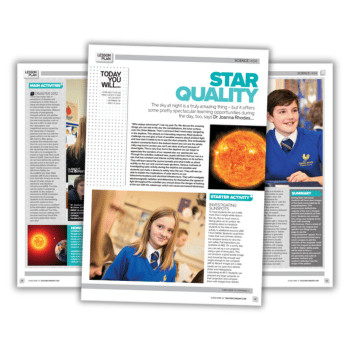Investigate electromagnetic radiation and determine the speed of light with this KS4 lesson plan all about the sun…
Through the physics activities outlined here, pupils will learn that our sun is a star that has constant and intense activity taking place on its surface.
They will learn about the Aurora Borealis and what it tells us about activity on the sun and coronal mass ejections.
Various methods of investigating solar activity during the daytime are possible and students can make a device to safely view the sun.
They will also be able to explain the implications of solar storms on our telecommunications and electrical infrastructure.
Throughout the activities, stress the danger of looking at the sun with the naked eye, which can cause permanent blindness.
Learning objectives
- Learn about our sun
- Make a device to view the sun safely
- Determine the speed of light
Starter activity
To most students the sun is little more than a bright white blob in the sky. But so much more is taking place on its surface. An amazing video to introduce students to the idea of solar activity is this video from NASA.
Students can make their own pinhole camera, the simplest device to view the sun safely. On a sunny day you can set up a sun projector using a pair of binoculars.
This can produce a good quality image and should be big enough and bright enough to see sunspots.
Recent images can be seen from SOHO (Solar and Heliospheric Laboratory). Students can pinpoint any large sunspots on their projection and compare them with images from SOHO.
Dr Joanna L. Rhodes M.Chem, D.Phil, MRSC is a teacher of science at Shelley College, Huddersfield.











